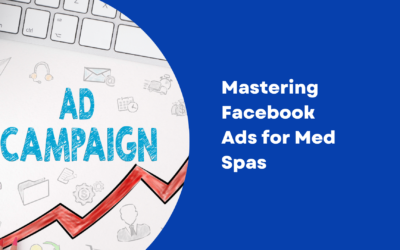When wondering how to use Google ads for clinic marketing, we all can feel a little lost. In an increasingly digital world, it’s crucial for therapy clinics to leverage modern marketing tools to boost their online visibility and reach their target audience effectively. One such potent tool is Google Ads. In this comprehensive guide, we delve into the multiple aspects of “Using Google Ads for Clinic Marketing,” offering insights and strategies to harness this platform’s power for your clinic’s growth and success.
Google Ads, as an advertising platform, serves as a bridge connecting businesses to potential customers actively looking for their services. In the context of a therapy clinic, Google Ads provides the opportunity to reach individuals seeking therapeutic services, enhancing visibility, driving website traffic, and, ultimately, increasing client bookings.
Understanding Google Ads: The Cornerstone of Digital Marketing for Clinics
Google Ads is a paid advertising platform that operates on a pay-per-click (PPC) model. It allows businesses to display their ads on Google’s search engine results pages (SERPs) and other Google properties. The prominence of Google as a search engine makes Google Ads a powerful tool for digital marketing for clinics.
Clinics can bid on specific keywords related to their services. When potential patients search for these keywords, Google displays the ads of the highest bidders. This process increases the visibility of your clinic to individuals who are actively seeking your services, significantly boosting your chances of attracting new patients.
The Power of Paid Search: Boosting Visibility with Google Ads
Paid search refers to the ads that appear at the top of the SERPs when a user conducts a search. These ads are marked with the label “Ad,” distinguishing them from organic search results. When a user clicks on your ad, they are directed to your website or a dedicated landing page, and you incur a cost for that click – hence, the term “pay-per-click.”
Using Google Ads for therapy practices and clinics can significantly enhance your online visibility. By appearing at the top of the SERPs, your clinic gains prominence, making it more likely for potential patients to visit your website. A well-executed Google Ads campaign can thus increase traffic to your site, leading to more inquiries, appointments, and ultimately, patient bookings.
Creating Effective Ad Campaigns: The Art of Using Google Ads for Clinic Marketing
Creating a successful Google Ads campaign involves several key steps. Firstly, you need to define your campaign goals. Whether you want to increase website visits, encourage more phone calls, or boost patient bookings, having a clear goal will guide your campaign setup and strategy.
Next, you need to choose the right type of campaign based on your objectives. Google Ads offers several campaign types, including Search Network campaigns, Display Network campaigns, Shopping campaigns, Video campaigns, and App campaigns. For a therapy clinic, a Search Network campaign could be a good starting point, as it allows you to display text ads on the Google search results page when users search for keywords related to your services.
After choosing your campaign type, you’ll need to select your target audience, decide on your budget, and create your ads. A compelling ad copy is crucial in attracting users’ attention and encouraging them to click on your ad. Your ad copy should include your targeted keywords, a clear call-to-action, and unique selling points of your clinic or services.
Keyword Research for Google Ads: Finding the Right Terms for Clinic Marketing
Keyword research forms the foundation of any successful Google Ads campaign. It involves identifying the terms and phrases that potential patients might use when searching for your services. By targeting these keywords in your ads, you can ensure your clinic appears in relevant searches, increasing the likelihood of attracting potential patients.
Using tools like Google Keyword Planner, you can find keyword ideas, see how often certain words are searched, and gauge how competitive these keywords are. Ideally, you want to find high-volume, low-competition keywords. For example, rather than targeting a generic term like “therapy,” you might opt for more specific terms like “child therapy clinic in [your city].”
Geotargeting: Using Google Ads for Clinic Marketing in Your Locale
Geotargeting is a feature in Google Ads that allows you to target your ads to specific geographical locations. For clinics, this is particularly useful, as most patients prefer local providers for their healthcare needs. With geotargeting, you can ensure that your ads are displayed primarily to users in your city or region, making your advertising efforts more efficient and cost-effective.
You can set up geotargeting at the campaign level in Google Ads. Here, you can specify the countries, regions, or cities where you want your ads to be shown. You also have the option to exclude locations where you don’t want your ads to appear. This way, you can focus your advertising efforts on the areas where you’re most likely to find your target patients.
Conversion Tracking and ROI Measurement: Maximizing Efficiency when Using Google Ads for Clinic Marketing
Tracking conversions and measuring return on investment (ROI) are critical aspects of using Google Ads for clinic marketing. Conversion tracking allows you to understand what happens after a user clicks on your ad—whether they book an appointment, submit a contact form, or make a phone call. These actions are vital as they contribute to your clinic’s revenue and growth.
Google Ads offers built-in tools for conversion tracking, which allow you to measure the effectiveness of your campaigns accurately. By analyzing the data, you can identify which ads, keywords, and campaigns are driving the most conversions, enabling you to optimize your future marketing strategies accordingly.
Return on Investment (ROI) is another key metric to measure the effectiveness of your Google Ads campaigns. Calculating ROI involves comparing the cost of your campaigns (the investment) with the revenue generated from these campaigns (the return). By doing so, you can determine if your Google Ads spend is yielding profitable results. If not, you’ll need to adjust your strategies to ensure you’re getting the most out of your investment.
Optimizing Google Ads Campaigns: Ensuring Peak Performance for Clinic Marketing
Over time, you’ll likely find opportunities to refine and improve your Google Ads campaigns. This process, known as optimization, involves making adjustments to your campaigns, ad groups, ads, and keywords to improve their performance.
For instance, you might adjust your bids based on the time of day, day of the week, or the device on which your ads are shown. If you find that certain keywords are driving more conversions, you might decide to allocate more of your budget towards those keywords. You might also test different ad copy variations to see which resonate more with your target audience.
Optimization isn’t a one-time task. It should be done continuously to ensure that your campaigns are always performing at their best. Regular monitoring and adjusting can significantly increase your Google Ads campaigns’ effectiveness, driving more traffic to your clinic and, ultimately, boosting patient numbers.
Integrating Google Ads with Other Marketing Strategies: Creating a Cohesive Approach to Clinic Marketing
While Google Ads is a powerful marketing tool, it’s most effective when used as part of a comprehensive digital marketing strategy. That means integrating your Google Ads efforts with other marketing initiatives, such as search engine optimization (SEO), social media marketing, content marketing, and email marketing.
For instance, the keyword research you conduct for your Google Ads campaigns can also inform your SEO strategy, helping your website rank higher in organic search results. Similarly, the insights you gain from your Google Ads campaigns can help you create more targeted and engaging content for your social media channels or email marketing campaigns.
Integrating your marketing strategies in this way can create a more cohesive and effective overall approach. It can also help deliver a consistent message across all channels, improving your brand’s credibility and trustworthiness.
Harnessing the Power of Google Ads for Clinic Marketing
The potential of Google Ads as a marketing tool for therapy clinics is immense. From boosting your clinic’s visibility to driving more patient bookings, the benefits are substantial. By understanding the platform, conducting thorough keyword research, crafting compelling ads, and continuously optimizing your campaigns, you can transform your clinic’s online presence.
As with any marketing endeavor, success with Google Ads doesn’t happen overnight. It requires time, effort, and a willingness to learn and adapt. However, with the right strategies and a patient-centered approach, you can effectively use Google Ads for clinic marketing, ensuring your clinic thrives in an increasingly competitive digital landscape. Remember, the key is not only to attract patients but also to provide quality care that encourages them to stay and refer others.
Google Ads is indeed a secret weapon in your marketing arsenal—one that can help you connect with the patients who need you the most. So, start harnessing its power today, and watch your clinic grow.





